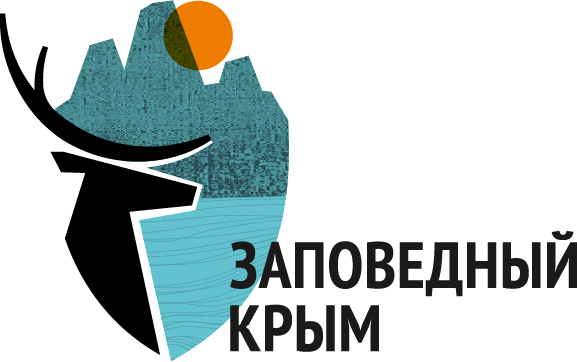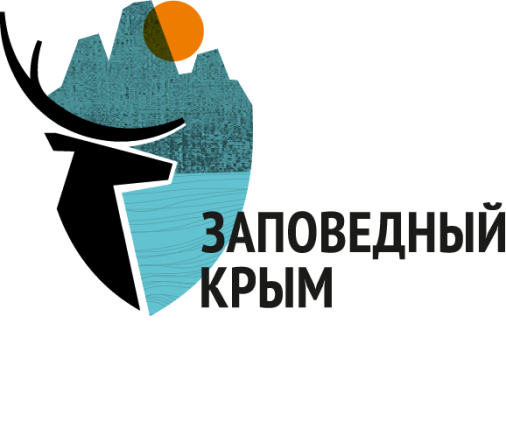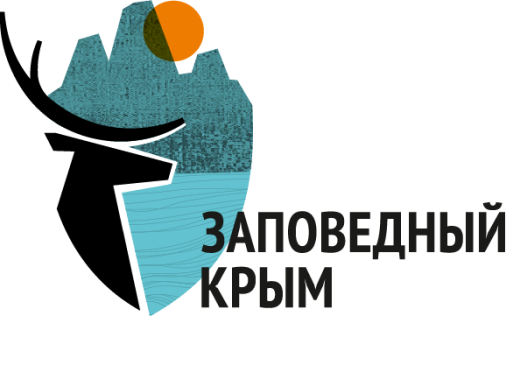

FLORA
The vegetation cover of the nature reserve has formed under special climatic and natural conditions and displays the high plant diversity of the Crimean Mountains.
Yalta Mountain-Forest Nature Reserve is home to rare and valuable species of trees and shrubs.
Yalta Mountain-Forest Nature Reserve is home to rare and valuable species of trees and shrubs.
The vegetation cover of the nature reserve has formed under special climatic and natural conditions and displays the high plant diversity of the Crimean Mountains.

Species diversity
The vegetation cover of the nature reserve is of an exceptional diversity for such a small area.
Flora
Lichens: over 330 species;
Fungi: 230 species.
Flora
- Vascular plants: more than 1400 species (65% of species of the Crimean Mountains)
- Bryophytes: about 180 species.
Lichens: over 330 species;
Fungi: 230 species.
Species diversity
The vegetation cover of the nature reserve is of an exceptional diversity for such a small area.
Flora
Fungi: 230 species.
Flora
- Vascular plants: more than 1400 species (65% of species of the Crimean Mountains)
- Bryophytes: about 180 species.
Fungi: 230 species.
Vascular plants:
- perennial grasses — 54,8%;
- annual grasses — 34,3%;
- shrubs and subshrubs — 10,9 %.
- Asteraceae — 12,2%;
- Fabaceae — 9,4%;
- Grasses (Poaceae) — 8,3%;
- Brassicaceae — 5,7%;
- Rosaceae — 5,6%;
- Mint family (Lamiaceae) — 5,2%;
- Umbellifers (Apiaceae) — 4,2%.
- Asteraceae — 12,2%;
- Fabaceae — 9,4%;
- Grasses (Poaceae) — 8,3%;
- Brassicaceae — 5,7%;
- Rosaceae — 5,6%;
- Mint family (Lamiaceae) — 5,2%;
- Umbellifers (Apiaceae) — 4,2%.
In the nature reserve there are relict plants that have been inhabiting Earth for millions of years:
Greek juniper (Juniperus excelsa Bieb.), Greek strawberry tree (Arbutus andrachne L.), Mt. Atlas mastic tree (Pistacia mutica Fisch. et Mey.), Yew (Taxus boccata L.).
Greek juniper (Juniperus excelsa Bieb.), Greek strawberry tree (Arbutus andrachne L.), Mt. Atlas mastic tree (Pistacia mutica Fisch. et Mey.), Yew (Taxus boccata L.).
In the nature reserve there are relict plants that have been inhabiting Earth for millions of years:
Greek juniper (Juniperus excelsa Bieb.), Greek strawberry tree (Arbutus andrachne L.), Mt. Atlas mastic tree (Pistacia mutica Fisch. et Mey.), Yew (Taxus boccata L.).
Greek juniper (Juniperus excelsa Bieb.), Greek strawberry tree (Arbutus andrachne L.), Mt. Atlas mastic tree (Pistacia mutica Fisch. et Mey.), Yew (Taxus boccata L.).
Forests
Forests cover about 75% of the nature reserve’s area. There are coniferous and deciduous forests of the sub-Mediterranean and Central European types.
Dominant species:
- Pine (Pinus pallasiana D.Don.) — 59% of the nature reserve’s area or 605 square kilometers;
- Oak — 20% of the nature reserve’s area or 28 square kilometers;
- Beech — 7% of the nature reserve’s area or 10 square kilometers;
Forests cover the area from the scarp southern slope of the Main Range to the plateau where they are replaced by steppes and meadows that are extremely colorful from spring to autumn.
Forests
Forests cover about 75% of the nature reserve’s area. There are coniferous and deciduous forests of the sub-Mediterranean and Central European types.
Dominant species:
- Pine (Pinus pallasiana D.Don.) — 59% of the nature reserve’s area or 605 square kilometers;
- Oak — 20% of the nature reserve’s area or 28 square kilometers;
- Beech — 7% of the nature reserve’s area or 10 square kilometers;
Pine (Pinus pallasiana D.Don.) is the most dominant species and:
- is famous for its medicinal effects (it gives off phytoncides);
- creates unique landforms in the nature reserve;
- is included in the Red Data Book of the Russian Federation.
The nature reserve’s forests are home to many rare species, i.e. for 43 orchids:
- 22 of them are in the Red Data Book of the Russian Federation,
- 40 of them are in the Red Data Book of the Republic of Crimea,
- 28 of them got international conservation status.

Altitudinal zones
The flora of the nature reserve displays the whole plant diversity of the Crimean Mountains. As elevation increases, the distribution of plant communities changes.
Altitudinal zones
The flora of the nature reserve displays the whole plant diversity of the Crimean Mountains. As elevation increases, the distribution of plant communities changes.
400−450 m above sea level
400−450 m above sea level
Downy oak (Quercus pubescens) and oriental hornbeam (Carpinus orientalis) forests are dominant at this elevation. Downy oak forests are replaced by juniper woodlands on the driest, well-heated steep stone slopes that have little soil cover. Juniper woodlands have been changed by human activity more than any other type of forests. That is why in these areas there are many shrubberies and grass groups of ephemera and ephemerides.
From 400−450 to 800−950 m above sea level
From 400−450 to 800−950 m above sea level
Forests of the sub-Mediterranean type of Crimean pine predominate. Crimean pine, or Pallas pine, releasing phytoncides, forms a truly healing microclimate. In these forests, in the lower part of the belt, the second tier forms an oak, and within the heights of 600−850 m above sea level, the Central European species is a rock oak.
Less often, on richer and wetter brown soils, it is replaced by typical non-morale species: common hornbeam and eastern beech. Mainly under the influence of logging in places, these species themselves form forests with their dominance, interspersed with spots in solid massifs of pine forests.
Less often, on richer and wetter brown soils, it is replaced by typical non-morale species: common hornbeam and eastern beech. Mainly under the influence of logging in places, these species themselves form forests with their dominance, interspersed with spots in solid massifs of pine forests.
From 800−950 m to 1000−1300 m above sea level.
From 800−950 m to 1000−1300 m above sea level.
It is characterized by gentle slopes and hollows with well-developed soils, which are covered with beech, hornbeam and hornbeam forests, and the steep southern slopes in the eastern part of the reserve are forests of Sosnovsky pine. In the western part of the reserve, along the steep rocky slopes, forests of Crimean pine penetrate into this zone up to the plateau.
Top point of the Main Range
Top point of the Main Range
The fourth line is represented by mountain meadow steppes. They occupy low steep (up to 30°) slopes of various exposures, flat locations with mountain-steppe soils. The steeper, mostly southern slopes with poorly developed, often washed-away soils are covered with tomillary communities, which are thickets of semi-shrubs and shrubs.
Meadow vegetation is formed in small-area depressions of the relief. Sometimes, in the deepest depressions of the relief, small areas of low, depressed beech forests can be found.
Near the top point of Ai-Petri, beech forests are found at an elevation of 1240 m above sea level. The undergrowth in them is sparse — single bushes of hazel and hawthorn. In connection with the negative winter temperatures on the plateau is dominated by species with a forced winter rest.
Among the plants there are a lot of "obvious relatives" of plants from other Black Sea regions — the Balkans, the Caucasus, Asia Minor.
Meadow vegetation is formed in small-area depressions of the relief. Sometimes, in the deepest depressions of the relief, small areas of low, depressed beech forests can be found.
Near the top point of Ai-Petri, beech forests are found at an elevation of 1240 m above sea level. The undergrowth in them is sparse — single bushes of hazel and hawthorn. In connection with the negative winter temperatures on the plateau is dominated by species with a forced winter rest.
Among the plants there are a lot of "obvious relatives" of plants from other Black Sea regions — the Balkans, the Caucasus, Asia Minor.

You can learn more about the plants and animals of Yalta Mountain-Forest Nature Reserve and the nature of the Crimean Riviera during walks along the routes.
The nature reserve offers both historical and brand new routes where you can walk through unique mountain landscapes.
The nature reserve offers both historical and brand new routes where you can walk through unique mountain landscapes.
You can learn more about the plants and animals of Yalta Mountain-Forest Nature Reserve and the nature of the Crimean Riviera during walks along the routes.
Photos used on this site belong to (photo credits): S. Ledenkov, I. Sikorsky, L. Moroz, V. Kostrov, N. Litvinyuk, D. Rutyanov, S. Alyomov, M. Atamanenko, G. Prokopov, D. Voinov, Y. Timofeev, Y. Shumlyaeva, M. Rozanov, V. Anzylov, V. Zyuzin, A. Gromov, Y. Zhuravleva, E. Nekadimova, N. Krymsky, K. Polyanskaya, A. Rybintsev, A. Mishin, A. Dmitrieva and naturerussia.travel
Photos used on this site belong to (photo credits): S. Ledenkov, I. Sikorsky, L. Moroz, V. Kostrov, N. Litvinyuk, D. Rutyanov, S. Alyomov, M. Atamanenko, G. Prokopov, D. Voinov, Y. Timofeev, Y. Shumlyaeva, M. Rozanov, V. Anzylov, V. Zyuzin, A. Gromov, Y. Zhuravleva, E. Nekadimova, N. Krymsky, K. Polyanskaya, A. Rybintsev, A. Mishin, A. Dmitrieva and naturerussia.travel

Yalta Mountain-
Forest Nature Reserve
Forest Nature Reserve
Kazantyp
Nature Reserve
Nature Reserve
Opuksky
Nature Reserve
Nature Reserve
Islands
and Water Area
and Water Area
Contacts
298650, The Republic of Crimea, Yalta, Sovietskoe, Dolosskoe road, 2.
+7 365 423 30 50
+7 365 437 88 41
zapovedcrimea@mail.ru
+7 365 423 30 50
+7 365 437 88 41
zapovedcrimea@mail.ru
© Crimean Protected Areas
All rights reserved. Any copying from this site is prohibited without permission of the directorate.
All rights reserved. Any copying from this site is prohibited without permission of the directorate.
If you have an emergency, witnessed a fire, illegal dumping or other law violations, dial:
+7 365 423 30 50
+7 978 904 24 40 (hotline)
+7 978 901 56 70
(Deputy Ranger Service Director)
+7 365 423 30 50
+7 978 904 24 40 (hotline)
+7 978 901 56 70
(Deputy Ranger Service Director)





